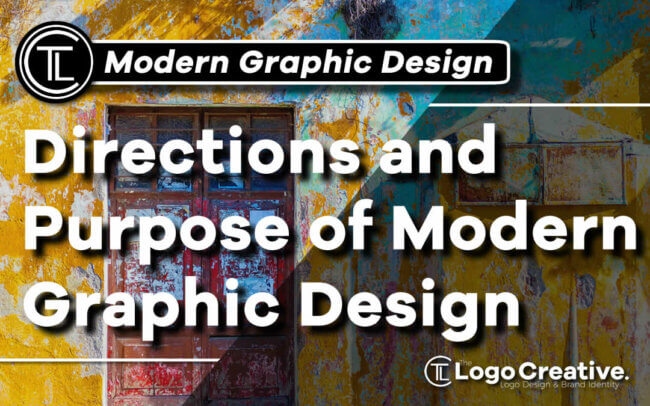Join us in this article as we discuss Modern Graphic Design: Directions and Purpose.
Table of Contents
What is Graphic Design?
Modern Graphic design is an expert circle of human action that lies at the junction of visual expressions, correspondence, brain research, and other master zones.
Graphic designers make the ways and resources of correspondence by methods for realistic (visual) components: pictures of various style and intricacy, photographs, types and textual styles, pictograms, shapes and sizes, shadings and shades, lines and bends, page formats, and so on.
A visual originator makes illustrations move the message, so they become functional.
Graphic designers can be portrayed as a sort of creatives applying their abilities not in the refined craftsmanship with a tasteful fulfillment as a prime; however, conveying and deliberate art.
What are the Creative Directions of Graphic Design?
Today, graphic design is an expansive zone to apply imaginative abilities in a variety of structures. For example, it incorporates making:
- illustration
- identity (logo and marking)
- icons and pictograms
- typography
- editorials
- interface designs and components
- print commercials
- graphic resources for vivified recordings and kid’s shows
- big print things, for example, banners and boards
- signs
- wayfinding designs
- infographics
- packaging and so forth
Whatever is objective and heading, the fundamental reason for graphic design is to serve a particular objective or set of objectives through art procedures.
Is Graphic Design Art?
In short, no, most professionals in this sphere do not take a position and call themselves artists.
Merriam-Webster dictionary defines art as
“The conscious use of skill and creative imagination especially in the production of aesthetic objects.”
The objects of art are appreciated mostly for their beauty, aesthetic value, and emotional appeal. And all that is not the primary goal set for design.
Visual creators’ employment could be depicted as building a scaffold between the art and the useful objective focused plan.
They blend the intensity of craftsmanship and usefulness inside the constraints of specific objectives and a distinct crowd.
“Good configuration is a great deal like unwavering discernment made visual”, said Edward Tufte, and that is a cool definition indicating what visual planners endeavor to accomplish.
It’s anything but difficult to see that graphic design covers different parts of human life, managing visual correspondence, from books and banners to complex portable applications or 3D movement.
Upheld by examination, investigation, and testing, illustrations upgrade ease of use, fortify marking and give a positive client experience.
That is where art and usefulness union and merge to make individuals more joyful by taking care of issues and fulfilling wishes.
For What Reason is Graphic Design Significant?
This question is often asked and not so easy to answer. One of the reasons this professional field has such a broad presence in our lives lies in the fact that people are mostly visual creatures.
We tend to perceive images faster than words. Colors and shapes influence us. We respond to characters and symbols.
We need prompts and visual hierarchy. We are dependent on emotions and feelings. The list may be prolonged — and graphic design is what makes the difference.
It rarely occurs that the object of graphic design serves only one objective. Let’s look into the core goals set for graphic assets.
What Abilities are Expected to Arrive at Achievement in Graphic Design?
Prerequisites to the masters in graphic design frequently incorporate the accompanying:
- Masterful technical aptitudes and ideally capability in some visual craftsmanship
- Artistic ability and imaginative nature
- Right masterful eye and sentiment of amicability
- Ability to draw well
- Right aptitudes in synthesis and visual examination
- Ability to take a shot at the investigation of target crowd and potential alternatives of correspondence with it
- Ability to apply various procedures of drawing and painting, ideally both with manual and computerized apparatuses (Photoshop, Illustrator, and so forth)
- Ability to learn and self-improve constantly as the circle is unique and assorted and so on
Would You be Able to be a Graphic Designer Without Drawing Abilities?
Well, in short: if we are talking about graphic design without high goals for success, yes, you may earn a living in the sphere without excellent skills in drawing.
Still, on the ground of practice, when a graphic designer aims at professional growth, a cool career, and exciting projects, drawing skills and knowledge of academic drawing theory are a necessary condition of success.
Join The Logo Community
We hope this article about Modern Graphic Design: Directions and Purpose. If you would like more personal tips, advice, insights, and access to our community threads and other goodies join me in our community. You can comment directly on posts and have a discussion.
*TIP – We use and recommend DesignCuts for all your fonts, mockups and design bundles.


